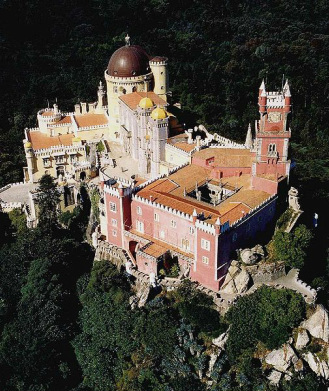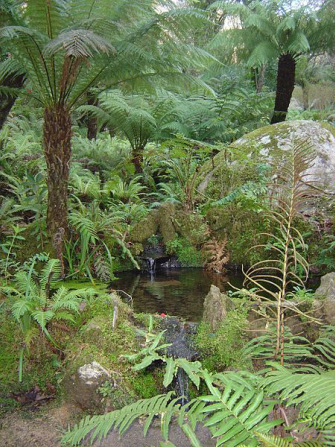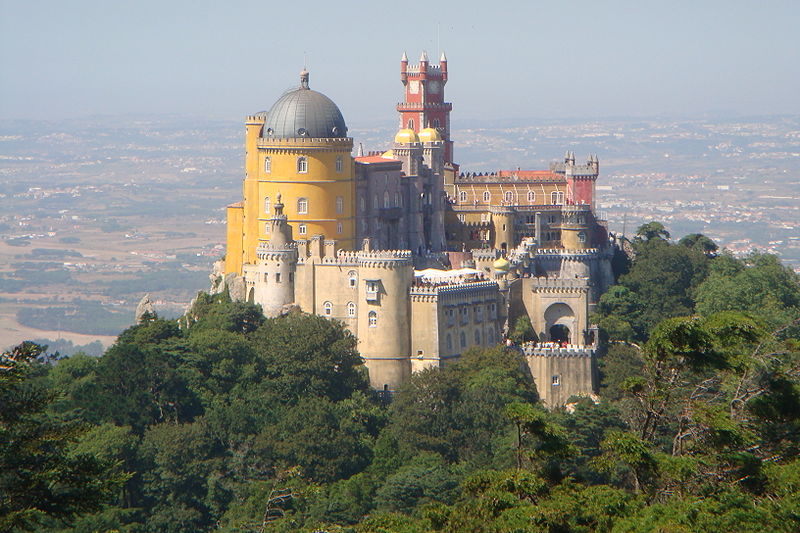Palacio da Pena

Palacio da Pena, Wikimedia Commons
Palacio Nacional da Pena (Pena National Palace) is the product of romantic dreams of the Portuguese royal family in the 19th century. The palace is situated on a hilltop overlooking the the town of Sintra i western Portugal. It is one of the Seven Wonders of Portugal, and is frequently used for official receptions by the government.
Originally, this hilltop was a site for pilgrimage. In 1493, King John II and his wife, Queen Leonor made a pilgrimage there. His successor, King Manuel I ordered the construction of a monastery there, and for centuries Pena was a quiet place for meditation. In the 18th century the monastery was first struck by lightning, and then reduced to ruins by the devastating Great Lisbon Earthquake in 1775. Only the chapel escaped demolition.

Palacio da Pena, gardens; Wikimedia Commons
The ruins remained untouched until the King consort Ferdinand II acquired it in 1838. Ferdinand then started the project to transform the ruins of the monastery into a palace that would serve as a summer palace for the royal family. The construction took place in the period 1842 – 1854, and was led by the German amateur architect Baron Wilhelm Ludwig von Enschwege, who was inspired by the numerous castles along the Rhine river. During the construction period, King Ferdinand and Queen Maria II intervened strongly on matters of decoration and symbolism – introducing Medieval and Islamic elements. The end result gave the castle a profusion of styles. In 1889 it was purchased by the Portuguese State, and after the Republican Revolution of 1910 the castle was classified as a national monument and transformed into a museum.
